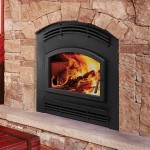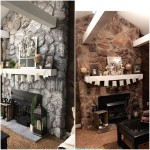Decorative Fireplace Screen: Small Size, Significant Impact
A decorative fireplace screen, even in a small size, is a crucial accessory for any functional or purely aesthetic fireplace. It serves multiple purposes, from providing a necessary safety barrier to enhancing the overall décor of the room. The scale of the screen, particularly when considering a smaller footprint, necessitates careful consideration of both functional needs and visual appeal.
This article explores the various aspects of decorative fireplace screens, focusing specifically on smaller models. It will cover their functionality, design options, material choices, and practical considerations for integrating them into a variety of interior design styles. Emphasis will be placed on how a well-chosen small fireplace screen can provide significant benefits without overwhelming the space.
Safety and Functionality of Small Fireplace Screens
The primary function of any fireplace screen is safety. Even a small fire can eject sparks and embers, potentially causing damage to flooring, furniture, and even posing a fire hazard. A well-constructed fireplace screen acts as a barrier, preventing these hazards from escaping the hearth. The mesh size of the screen is critical in this regard. Fine mesh screens are more effective at containing smaller embers, while larger mesh sizes might be better suited for fireplaces that primarily use gas logs or decorative elements with minimal risk of sparking.
Beyond spark prevention, a fireplace screen also serves as a physical barrier, preventing children and pets from getting too close to the fire. The heat emanating from a fireplace can be dangerously high, and a screen provides a buffer zone, reducing the risk of burns. Smaller screens are particularly effective in smaller rooms where the proximity to the fireplace is naturally closer.
Furthermore, a fireplace screen can help to regulate airflow within the fireplace. While a completely open fireplace can draw excessive air, leading to a faster burn rate and increased fuel consumption, a screen can provide a slight obstruction, contributing to a more controlled and efficient burn. This is especially relevant in fireplaces used for heating purposes during colder months.
The overall stability of the screen is another important functional consideration. A small screen, by virtue of its size, may be more prone to tipping or being accidentally moved. Opting for a screen with a sturdy base and a sufficient weight distribution is crucial for ensuring stability and preventing accidental displacement.
Design Considerations for Small Decorative Fireplace Screens
While functionality is paramount, the aesthetic appeal of a fireplace screen is equally important. A well-chosen screen should complement the existing décor of the room and enhance the overall visual harmony. Small fireplace screens offer a surprising amount of design versatility, allowing homeowners to express their personal style and create a focal point within the space.
Numerous design styles are available, ranging from traditional wrought iron designs to modern minimalist options. Traditional screens often feature intricate scrollwork, floral motifs, or depictions of wildlife scenes. These screens typically utilize materials like wrought iron or cast iron, often finished with a black or antique bronze patina to evoke a sense of timeless elegance. For more contemporary spaces, simpler designs with clean lines and geometric patterns are often preferred. These screens may incorporate materials like stainless steel, brass, or even glass accents.
The finish of the screen is another key design element to consider. A matte black finish is a versatile choice that complements a wide range of décor styles, while polished brass or copper finishes can add a touch of glamour and sophistication. Depending on the interior design, a painted screen in a bold color can serve as a statement piece, adding a pop of visual interest to the room. It’s crucial to ensure that the paint is heat-resistant to prevent chipping or discoloration over time.
The size and proportions of the screen are also crucial in relation to the fireplace opening. A small screen that is too short or too narrow will not provide adequate protection and will look visually unbalanced. Conversely, a screen that is too large will overwhelm the fireplace and detract from its architectural features. Careful measurements should be taken to ensure that the screen is appropriately sized for the specific fireplace opening.
Beyond the screen itself, consider how the screen interacts with other decorative elements in the room. The screen should complement the mantel, the hearth, and any artwork or accessories displayed nearby. The goal is to create a cohesive and harmonious aesthetic that reflects the homeowner's personal taste and style.
Materials and Construction of Small Fireplace Screens
The materials used in the construction of a fireplace screen significantly impact its durability, safety, and aesthetic appeal. The most common materials include various metals, such as steel, wrought iron, cast iron, brass, and stainless steel. Each material offers unique characteristics in terms of strength, heat resistance, and visual appearance.
Steel is a cost-effective and durable option that is widely used in fireplace screen construction. It is available in a variety of thicknesses and can be easily shaped and welded to create different designs. However, steel is susceptible to rust if not properly coated or treated. Wrought iron is a more traditional material that is known for its strength and durability. It is often used in intricate and decorative designs, adding a touch of old-world charm to the fireplace. Cast iron is even more durable than wrought iron and can withstand extremely high temperatures. It is often used in heavy-duty screens or those designed for fireplaces that are used frequently.
Brass and stainless steel are more expensive options that offer excellent corrosion resistance and a sleek, modern appearance. Brass is often used for decorative accents or trim, while stainless steel is a popular choice for contemporary fireplace screens. Both materials are relatively easy to clean and maintain, making them a practical choice for busy households.
The mesh material used in the screen is also an important consideration. Wire mesh, made from various metals, is the most common type of mesh used in fireplace screens. The gauge of the wire determines the mesh size and the level of protection it provides. Finer mesh sizes are more effective at trapping smaller embers, while larger mesh sizes allow for better airflow. Glass panels are sometimes incorporated into fireplace screens, offering a clear view of the fire while providing a barrier against sparks and embers. However, glass panels can become extremely hot and should be handled with care.
The construction quality of the screen is equally important. The screen should be sturdy and well-built, with strong welds and durable hinges. The finish should be even and free of defects. It is advisable to inspect the screen carefully before purchasing to ensure that it is of high quality and will provide years of reliable service.
The overall weight of the small screen is an essential safety factor. A screen that uses a heavier metal construction is less likely to be accidentally knocked over, especially by children or pets. The base of the screen is critical to the overall balance and stability. Ensure that the base provides a wide stance and solid contact points with the floor surrounding the fireplace opening.

Contemporary Summer Screen Brass No Mesh Pilgrim Home Hearth

Small Crest Fireplace Screen With Doors Decorative Screens

Fireplace Glass Doors Vs Screens Full Service Chimney

View All Fireplace Screens Pilgrim Home Hearth

Plow Hearth Small Crest Fireplace Fire Screen With Doors 38 W X 31 H At Center Copper Target

4 Expert Tips To Choose A Fireplace Screen Visualhunt

Dragonfly Diamond Fireplace Screen Decorative Screens

Best Fireplace Accessories For Your Home The Depot

40 Living Room Ideas Aromatherapy Diffusers Cool Tv Stands Fireplace Doors








